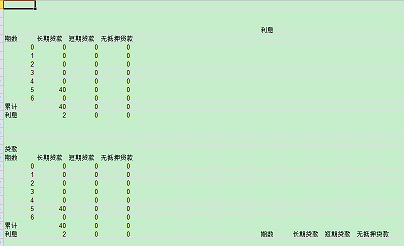ArrayList就是传说中的动态数组,就是Array的复杂版本,它提供了如下一些好处:动态的增加和减少元素、灵活的设置数组的大小......
认真阅读本文,我相信一定会对你有帮助。比如为什么ArrayList里面提供了一个受保护的removeRange方法?提供了其他没有被调用过的私有方法?
首先看到对ArrayList的定义:
[java]
public class ArrayList<E> extends AbstractList<E> implements List<E>, RandomAccess, Cloneable, java.io.Serializable
从ArrayList<E>可以看出它是支持泛型的,它继承自AbstractList,实现了List、RandomAccess、Cloneable、java.io.Serializable接口。
AbstractList提供了List接口的默认实现(个别方法为抽象方法)。
List接口定义了列表必须实现的方法。
RandomAccess是一个标记接口,接口内没有定义任何内容。
实现了Cloneable接口的类,可以调用Object.clone方法返回该对象的浅拷贝。
通过实现 java.io.Serializable 接口以启用其序列化功能。未实现此接口的类将无法使其任何状态序列化或反序列化。序列化接口没有方法或字段,仅用于标识可序列化的语义。
ArrayList的属性
ArrayList定义只定义类两个私有属性:
[java]
/**
* The array buffer into which the elements of the ArrayList are stored.
* The capacity of the ArrayList is the length of this array buffer.
*/
private transient Object[] elementData;
/**
* The size of the ArrayList (the number of elements it contains).
*
* @serial
*/
private int size;
[java]
很容易理解,elementData存储ArrayList内的元素,size表示它包含的元素的数量。
有个关键字需要解释:transient。
Java的serialization提供了一种持久化对象实例的机制。当持久化对象时,可能有一个特殊的对象数据成员,我们不想用serialization机制来保存它。为了在一个特定对象的一个域上关闭serialization,可以在这个域前加上关键字transient。
ansient是Java语言的关键字,用来表示一个域不是该对象串行化的一部分。当一个对象被串行化的时候,transient型变量的值不包括在串行化的表示中,然而非transient型的变量是被包括进去的。
有点抽象,看个例子应该能明白。
[java]
public class UserInfo implements Serializable {
private static final long serialVersionUID = 996890129747019948L;
private String name;
private transient String psw;
public UserInfo(String name, String psw) {
this.name = name;
this.psw = psw;
}
public String toString() {
return "name=" + name + ", psw=" + psw;
}
}
public class TestTransient {
public static void main(String[] args) {
UserInfo userInfo = new UserInfo("张三", "123456");
System.out.println(userInfo);
try {
// 序列化,被设置为transient的属性没有被序列化
ObjectOutputStream o = new ObjectOutputStream(new FileOutputStream(
"UserInfo.out"));
o.writeObject(userInfo);
o.close();
} catch (Exception e) {
// TODO: handle exception
e.printStackTrace();
}
try {
// 重新读取内容
ObjectInputStream in = new ObjectInputStream(new FileInputStream(
"UserInfo.out"));
UserInfo readUserInfo = (UserInfo) in.readObject();
//读取后psw的内容为null
System.out.println(readUserInfo.toString());
} catch (Exception e) {
// TODO: handle exception
e.printStackTrace();
}
}
}
被标记为transient的属性在对象被序列化的时候不会被保存。
接着回到ArrayList的分析中......
ArrayList的构造方法
看完属性看构造方法。ArrayList提供了三个构造方法:
[java]
/**
* Constructs an empty list with the specified initial capacity.
*/
public ArrayList(int initialCapacity) {
super();
if (initialCapacity < 0)
throw new IllegalArgumentException("Illegal Capacity: "+
initialCapacity);
this.elementData = new Object[initialCapacity];
}
/**
* Constructs an empty list with an initial capacity of ten.
*/
public ArrayList() {
this(10);
}
/**
* Constructs a list containing the elements of the specified
* collection, in the order they are returned by the collectio
补充:软件开发 , Java ,




